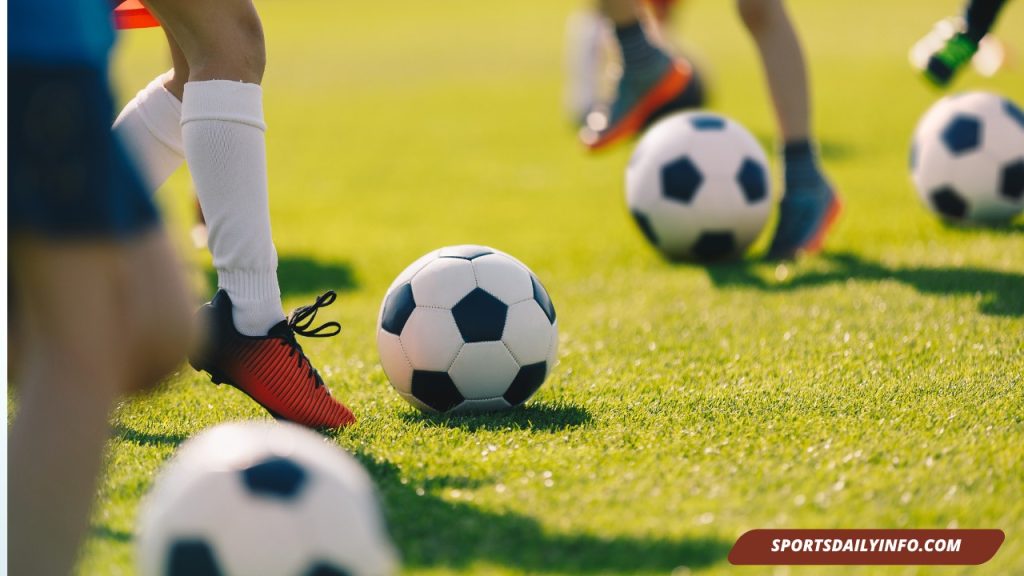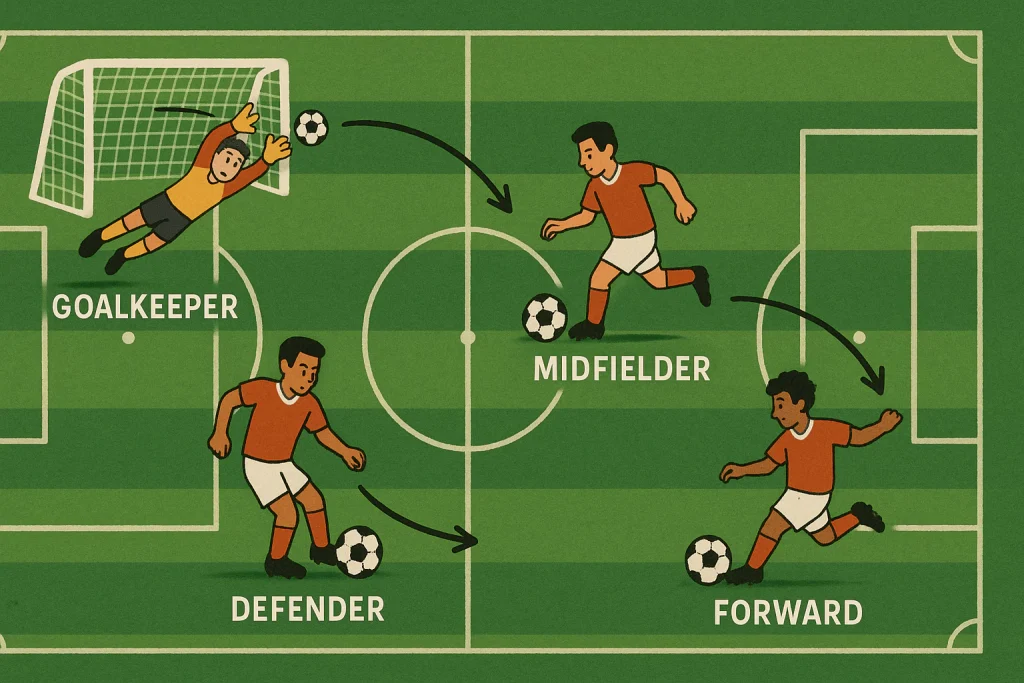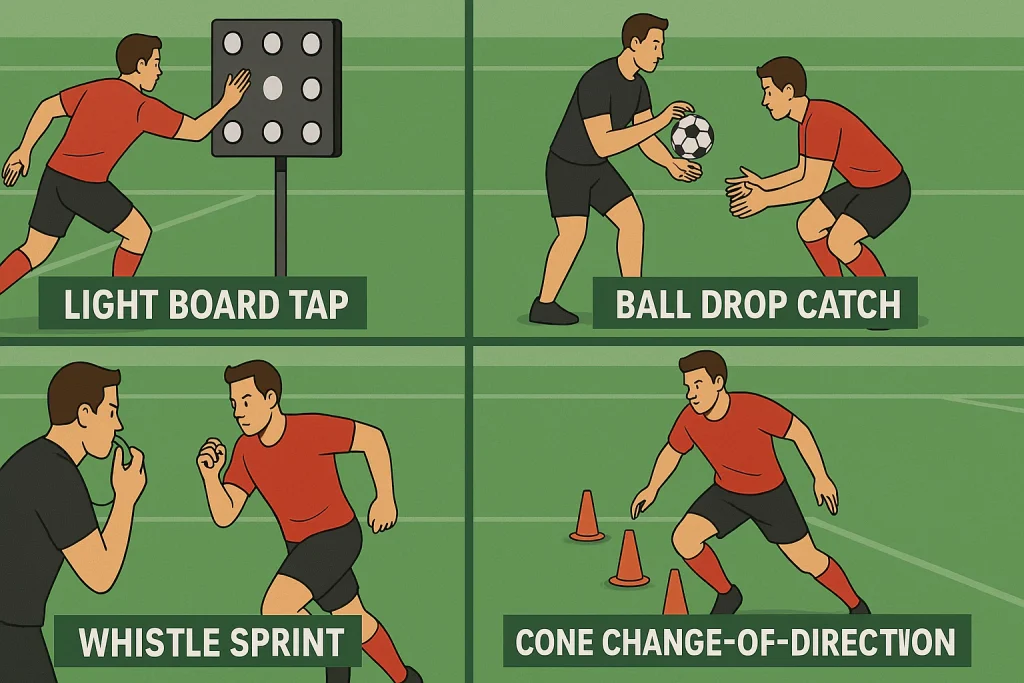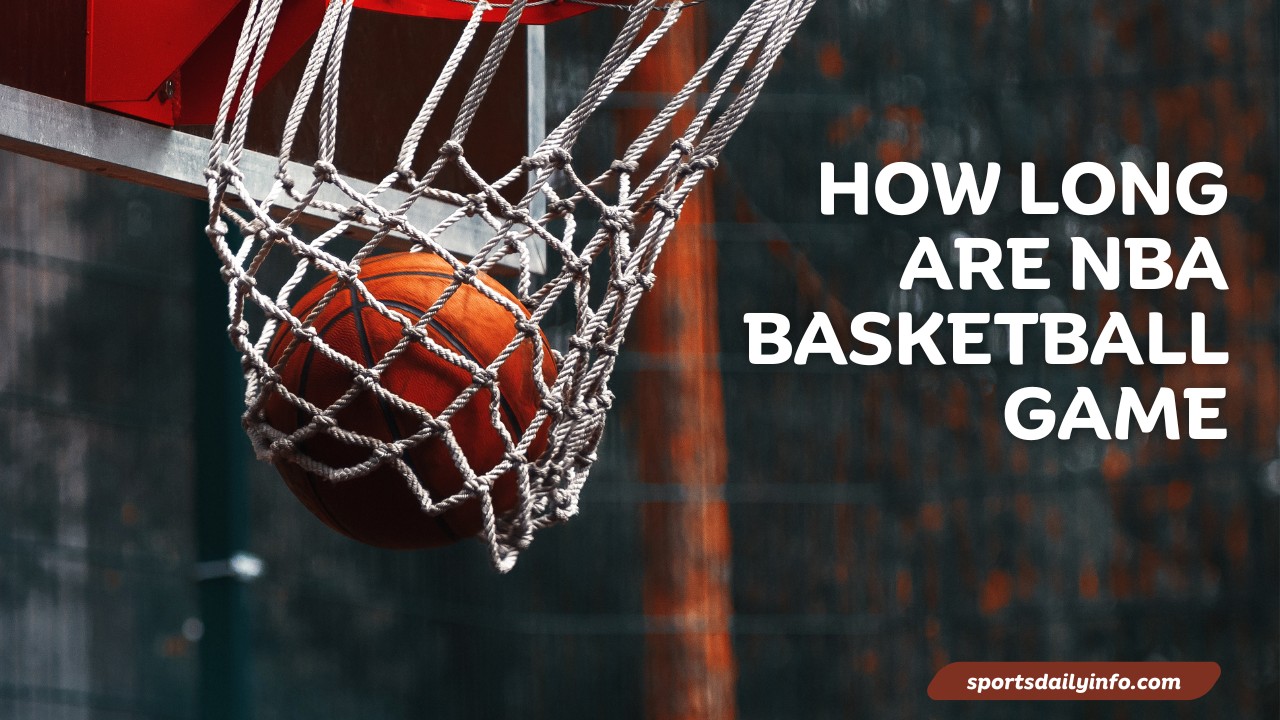Have you ever watched a soccer match and wondered how a player manages to block a lightning-fast shot or make a perfect pass in the blink of an eye? That’s not just talent—it’s reaction time. In a game where everything changes in seconds, a player’s ability to react quickly can be the secret sauce that sets them apart.
As someone who’s spent countless hours both playing and analyzing soccer, I’ve come to realize that reaction time isn’t just a bonus skill—it’s a fundamental part of the game. Whether you’re a striker trying to beat a defender or a goalkeeper reading a penalty kick, your reflexes can make or break your performance.
In this guide, I’m going to break down why reaction time matters so much in soccer, how it affects different positions, and most importantly—how you can improve it. Whether you’re a player, coach, or a curious fan, you’ll walk away with practical insights backed by real examples and training strategies that work.
Let’s dive into the fast-paced world of reflexes, decision-making, and the science behind soccer’s split-second moments.

Contents
- 1 What Is Reaction Time in Soccer?
- 2 Why Is Reaction Time Important in Soccer?
- 3 Factors Affecting a Player’s Reaction Time
- 4 How to Improve Reaction Time in Soccer
- 5 Real-World Examples of Fast Reaction Time in Soccer
- 6 Training Tips from Professionals
- 7 Tools and Technology to Enhance Reaction Time
- 8 Common Mistakes to Avoid When Training Reaction Time
- 9 The Long-Term Benefits of Fast Reaction Time in Soccer
- 10 FAQ – Reaction Time in Soccer
What Is Reaction Time in Soccer?
Reaction time in soccer is how fast a player responds to what’s happening on the field. It could be moving to intercept a pass, reacting to a teammate’s signal, or diving to block a shot. These moments happen in a flash, and players who respond quicker usually win the edge.
There are different types of reaction time. Simple reaction time is when you respond to one known signal—like a goalkeeper jumping when the ball is kicked. Choice reaction time happens when there are multiple possible actions—like a midfielder deciding where to pass when under pressure. Then there’s complex reaction time, which combines fast thinking and physical movement under game pressure.
A table comparing different types of reaction time and how they show up in real soccer scenarios.
| Reaction Type | Description | Soccer Example |
| Simple Reaction | One clear signal, one clear response | Goalkeeper jumps at a penalty kick |
| Choice Reaction | Multiple signals, must choose correct response | Midfielder decides where to pass |
| Complex Reaction | Signals plus decision-making with pressure | Defender responds to fake-out by striker |
If you’re curious about the science behind it, check out this research on reaction time in sports published by the National Institutes of Health. It breaks down how our brains and bodies work together during these fast decisions.
Why Is Reaction Time Important in Soccer?
In soccer, milliseconds can make a big difference. A quick reaction can turn defense into attack, or stop a goal before it happens. That’s why reaction time is important across all positions.
When I played midfield, I noticed the quicker I reacted, the easier it was to control the flow of the game. Fast responses helped me spot openings and make better passes. For defenders, a split-second delay can mean the difference between a clean tackle and letting an opponent slip through. And for goalkeepers—well, their entire role is built on sharp reflexes.
Here’s where fast reaction time really matters:
- Passing: Reacting quickly helps spot open teammates and avoid interceptions.
- Shooting: Fast reactions give you more power and precision when you shoot.
- Defending: Quick reflexes help with blocks and closing space.
- Goalkeeping: Being able to move instantly after a shot is taken is crucial.

A table showing how reaction time affects different positions on the field.
| Position | Role on the Field | Why Reaction Time Matters |
| Striker | Scoring goals | Reacting to rebounds or defenders |
| Midfielder | Game control & passing | Spotting open teammates under pressure |
| Defender | Stop attacks | Blocking shots and reacting to dribbles |
| Goalkeeper | Last line of defense | Diving, catching, and decision-making |
This FIFA research article on player performance even points out how important fast decisions are in modern football, especially at elite levels.
Factors Affecting a Player’s Reaction Time
Not every player reacts the same way—and that’s normal. Many things affect how fast you respond during a match.
1. Age and Fitness:
Younger players often have faster reflexes. But staying fit and active helps at any age. I’ve seen older players stay sharp just by keeping up with regular training.
2. Mental Focus:
If your mind’s distracted, your reactions slow down. That’s why staying alert, even off the ball, is key. Mental sharpness often comes with experience and proper rest.
3. Fatigue and Stress:
When you’re tired or stressed, your brain slows down. Your muscles feel heavy. It becomes harder to make decisions or act fast. This study on stress and athletic performance shows how even mild stress can impact reaction speed.
4. Training and Experience:
Reaction time isn’t fixed—you can improve it. The more you play, the more your brain recognizes patterns. That’s why experienced players often “seem” faster—they’re just better at reading the game.
How to Improve Reaction Time in Soccer
The good news is that you can train your brain and body to react faster. I’ve tried many methods over the years, both on and off the field. The best part? You don’t need fancy gear—just consistency and a bit of creativity.
1. Physical Drills
Speed ladders, cone drills, and shuttle runs all help boost your footwork and reaction speed. They teach your muscles to fire quickly. I like using simple agility ladder drills before practice—it wakes up my brain and body.
2. Vision and Brain Training
Your eyes lead your body. So, training them matters. Try tools like reaction lights or apps that test hand-eye coordination. I’ve used FitLight Trainer and even mobile apps like NeuroTracker to sharpen my visual focus. These tools are used by pro athletes and really help.
3. Reaction-Based Games
Even video games can help. Games that force quick choices train your brain in a fun way. I’ve used Blazepod for light-based drills. It’s fun and keeps your reflexes sharp.
4. Rest, Sleep, and Diet
Never overlook the basics. When you’re well-rested, you react faster. Harvard Medical School says sleep helps the brain form fast-response habits. I aim for at least 7–8 hours a night before a game. A balanced diet also fuels better brain and muscle performance.
[Here’s a table with my go-to reaction time tools and drills.]| Tool/Drill | Purpose | Why I Like It |
| Speed Ladder | Footwork and quick changes | Easy to use and very effective |
| Blazepod | Light-based reaction drills | Fun, engaging, and data-tracking enabled |
| NeuroTracker | Cognitive and visual tracking | Great for focus and field awareness |
| Cone Shuffle Drills | Improves direction change speed | Simple setup, high impact |
Real-World Examples of Fast Reaction Time in Soccer
Some of the greatest players in history weren’t just skilled—they were quick thinkers too. Their ability to react under pressure sets them apart.
Take Lionel Messi, for example. His quick footwork and split-second decisions make him almost impossible to defend. I’ve studied how he watches defenders’ body language, then makes lightning-fast moves. It’s not magic—it’s trained reaction time.
Then there’s Manuel Neuer, Germany’s legendary goalkeeper. He’s known for rushing out of the box before the striker even shoots. That’s not just reflex—it’s anticipation built on hours of training.
I’ve seen young players try to mimic these pros. And with the right drills, it works. Their timing improves. Their confidence grows. It’s amazing to watch.
Another great moment? Think back to the 2014 World Cup when James Rodríguez scored a stunning volley. The way he controlled the ball and shot in one fluid move was a perfect display of fast thinking and reacting. That’s the power of trained reflexes in action.
Quick reactions don’t just make you look good—they change the course of games.
Training Tips from Professionals

When I started studying top players and coaches, I noticed something. They don’t just train harder—they train smarter. I’ve picked up some great tips from professionals over the years, and they’ve made a huge difference in how I train for reaction speed.
1. Break It Down into Small Steps
Most pro coaches agree—you should focus on quick wins. Instead of trying to fix everything at once, start with one area. For example, work only on turning speed for one week. Then add ball control under pressure the next. This idea lines up with microlearning in sports, which helps athletes retain skills better.
2. Use Game-Like Situations
I learned this the hard way—generic drills aren’t enough. The best way to train your reactions is to copy real-game moments. That means unpredictable passes, random bounces, and pressure from teammates. Pro clubs now use situational training because it builds match awareness and fast decision-making.
3. Train in Short Bursts
Your brain responds best in short, focused sets. A 10-minute reaction drill can be more useful than an hour of slow, boring practice. I follow this method during warm-ups. Quick rounds with cones or light-response tools wake up the brain and body fast.
4. Include Recovery Time
Elite coaches stress this all the time—recovery helps speed. Without rest, your brain won’t reset. I include light days and full rest every week. It’s backed by sports science research that shows recovery boosts mental sharpness.
5. Stay Consistent
This is where most players fall short. Professional-level training isn’t about being perfect every day. It’s about showing up. Even 15 minutes a day adds up fast. When I stick to my plan, I see results within weeks.
Tools and Technology to Enhance Reaction Time
Technology has changed how athletes train—and soccer is no different. I’ve tested a bunch of tools over the years, and some are truly game-changers. They help sharpen reflexes, improve brain speed, and give real feedback.
1. Reaction Lights (Blazepod, FitLight)
These lights flash at random, and you tap them as fast as you can. It might look like a kids’ game—but trust me, it works. Blazepod is great for soccer drills, and FitLight Trainer is used by pros. I use them before matches to get my brain alert.
2. Mobile Reaction Apps
Don’t have gear? No worries. Apps like Reflex Training or NeuroTracker train your eyes and brain. These apps offer vision drills, memory tasks, and quick-tap games. They’re perfect for training on the go.
3. VR and Cognitive Tech
Top clubs now use virtual reality to simulate real matches. Players wear headsets and react to in-game scenes. It boosts decision-making under pressure. I’ve tried it at a training camp—it’s intense but super effective.
4. Wearables and Trackers
Fitness bands now track more than steps. Some wearables track reaction time through movement speed and delay. Tools like Whoop and Garmin help you understand how well you recover, which affects reaction time too.
5. DIY Setups
On a budget? No problem. I’ve set up my own drills with cones, flashcards, and even phone timers. You don’t need high-end tech to get faster—you just need to stay creative.
Common Mistakes to Avoid When Training Reaction Time
I’ve seen a lot of players—myself included—make the same mistakes when trying to improve reaction time. These might seem small, but they can slow down your progress. Here are a few to watch out for.
1. Focusing Only on Physical Speed
Many players think reaction time is just about moving fast. But it’s really about how quickly your brain processes what’s happening. According to Cleveland Clinic, good reaction speed starts in the brain, not just the muscles. If you skip mental drills, you’re missing half the picture.
2. Training Too Much Without Rest
I’ve done this myself—thinking more is better. But pushing too hard can backfire. Your brain gets tired, and your reflexes slow down. Overtraining leads to burnout and even injury. Rest days aren’t lazy—they’re smart.
3. Skipping Warm-Ups
Jumping into reaction drills without warming up is a recipe for slow responses. I always start with a light jog, dynamic stretches, and a few quick foot drills. It gets the blood flowing and sharpens my brain.
4. Not Making Drills Sport-Specific
Drills that don’t match real soccer moves can waste time. For example, tapping a light on a wall might be fun—but unless you connect it to soccer actions (like passing, dribbling, or positioning), it won’t help as much. Game-based training builds stronger reflexes.
5. Being Inconsistent
This one’s huge. I used to train for a week straight, then stop for a month. No surprise—I lost my edge. Reaction time improves with steady effort. Even 10 minutes a day can make a big difference if you stick with it.
The Long-Term Benefits of Fast Reaction Time in Soccer
Once your reaction time improves, you start to feel it in every part of your game. It’s not just about reacting faster—it’s about playing smarter. Here’s what I’ve experienced (and seen in others) when reaction time becomes second nature.
1. Better Positioning and Anticipation
When your brain reacts faster, you don’t just chase the ball—you predict where it’s going. That means fewer missed tackles and smarter plays. It’s how players like Sergio Busquets dominate without sprinting all game. They’re always in the right place at the right time.
2. More Confidence on the Field
When I know my reactions are sharp, I feel more confident. I take more chances, stay calm under pressure, and make quicker passes. Confidence isn’t just mental—it grows from preparation.
3. Fewer Mistakes in High-Pressure Moments
Split-second decisions matter in soccer. A poor reaction can cost a goal or a win. Faster reflexes reduce hesitation, even when the game gets intense. Studies like this one from ScienceDirect show that quicker cognitive responses reduce decision errors in athletes.
4. Longer Playing Career
This one surprised me. Players with fast reaction times tend to avoid injuries and stay relevant longer, even when their speed slows down. It’s because they rely on timing and reading the game—not just physical pace.
[Here’s a comparison table to show how reaction time benefits different soccer positions.]| Position | Reaction Time Benefit | Real-Life Impact |
| Goalkeeper | Quicker dives and saves | Blocks more shots, anticipates crosses |
| Defender | Better interceptions and tackles | Breaks up plays before they develop |
| Midfielder | Fast decisions under pressure | Controls game flow, distributes better |
| Forward | Sharp movement and positioning | Finishes chances with minimal delay |
Fast reactions give you a secret edge. And once you’ve got it, everything in your game levels up.
FAQ – Reaction Time in Soccer
To wrap things up, here are some of the most common questions I hear about reaction time in soccer. Whether you’re just starting out or already deep into your training, these answers will help clear things up.
1. What is a good reaction time for a soccer player?
A good reaction time for athletes usually falls between 200 to 250 milliseconds, according to Harvard Medical School. For soccer players, this can vary depending on position. Goalkeepers often aim for faster reactions, sometimes as low as 150 ms, while midfielders and forwards benefit more from quick decision-making combined with movement.
2. How can I test my reaction time at home?
You don’t need fancy gear. Try this:
Hold a ruler vertically above your hand. Let it drop without warning. Catch it as fast as you can. The lower the distance it falls, the faster your reaction. There are also online tools like Human Benchmark where you can test and track your reaction time with a simple click test.
3. Can reaction time really be improved with training?
Absolutely! I’ve improved mine with just 10 minutes a day of focused drills. Research from the National Library of Medicine shows that regular practice boosts both visual and motor reaction times. The key is consistency and mixing physical and mental exercises.
4. Does age affect reaction time in soccer?
Yes, reaction time tends to slow with age. But here’s the good news: you can keep it sharp with training. Mental drills, brain games, and sport-specific exercises help maintain fast thinking. That’s why older players like Luka Modrić still perform at the highest level—they use experience and smart training to stay ahead.
5. Are there any foods or habits that help reaction time?
Yes! A balanced diet with omega-3s (found in fish like salmon) supports brain health. Sleep is also huge. According to the Sleep Foundation, even one bad night of sleep can slow your reactions. I also avoid too much caffeine before matches—it can make you jittery instead of sharp.
 Sports Daily Info All Things Sports, from News to Match Schedules
Sports Daily Info All Things Sports, from News to Match Schedules



